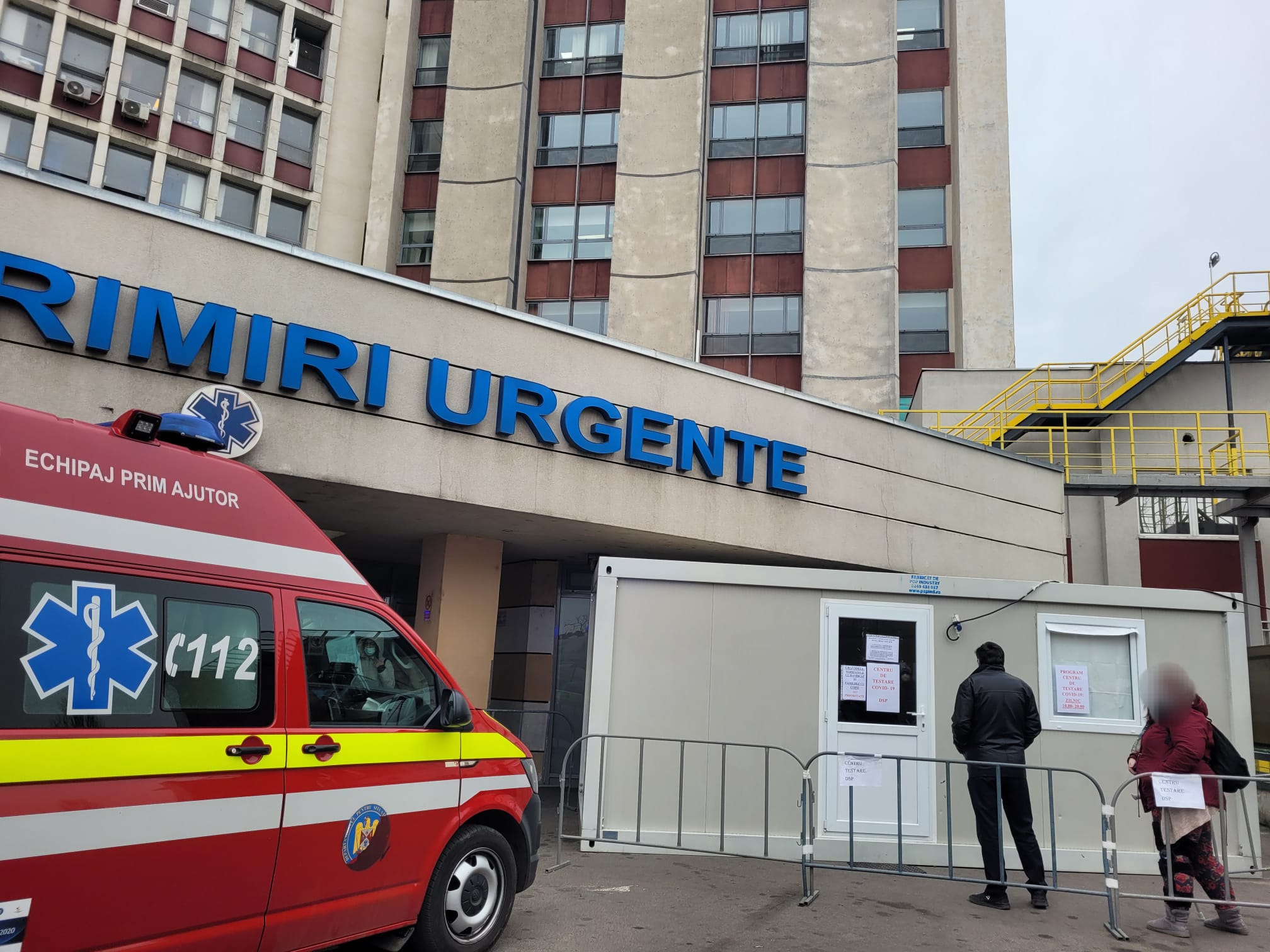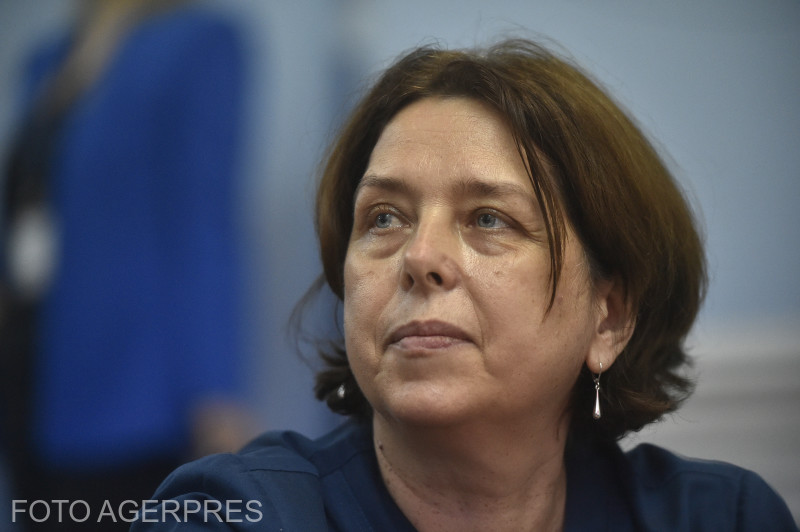
The number of stroke patients no longer depends on age – we are increasingly talking about young patients who are often left with consequences – those who survive – and about long recovery periods, says Professor Dr. Gheorghe Jana, primary physician of radiology and medical imaging , with a super specialization in neuroimaging, and president of the Romanian Society of Neuroradiology and Interventional Radiology. Gheorghe Jana is one of 32 doctors in Romania who treat ischemic stroke with endovascular thrombectomy, a minimally invasive interventional radiological technique that radically reduces the incidence of serious complications after stroke.
Unfortunately, even if it is fully regulated by the Romanian state, the procedure is possible only for patients who arrived at the hospital within the first 6 hours of the onset of symptomsand Romania currently has only 9 hospitals where this intervention can be done and only 32 specialist doctors.
Because of the small number of specialized staff and the limited hours, some doctors say that they often come from home in their spare time to perform the procedure.
What is thrombectomy, a minimally invasive stroke treatment procedure, and in which 9 hospitals in Romania can it be performed
Endovascular thrombectomy is a method of interventional radiology recommended for the treatment of acute ischemic disorders of cerebral circulation, which consists in the removal of a thrombus that blocks blood flow in an artery using a minimally invasive procedure.
Basically, thrombectomy consists in aspiration of a thrombus with the help of a catheter that reaches the level of the cerebral artery and leads to revascularization of the artery.
Thrombectomy provides a radical reduction of severe consequences after a stroke.
Unfortunately, few Romanians with stroke benefit from this medical procedure for several reasons: it can only be performed in the first 6 hours after the onset of symptoms, and in Romania it is currently available in only 9 hospitals, even though we should have at least one such center in million inhabitants.

Hospitals that perform thrombectomy in Romania:
- Bucharest University Emergency Hospital
- Elias Emergency Hospital
- Military hospital from Bucharest
- Institute of cerebrovascular diseases named after
- Tirgu Mures District Hospital
- Timisoara District Hospital
- Suchav District Hospital
- Sibiu District Hospital
- Oradea District Hospital
Why is thrombectomy not indicated for every ischemic stroke
Not every ischemic stroke has an indication for thrombectomy, but only a part of patients is suitable – about 20%-25%, emphasizes the university professor. Dr. Cristina Tiu, head of the neurological clinic of the University Emergency Hospital in Bucharest.
“Not every stroke can be cured by mechanical thrombectomy, but only a part of patients is suitable – about 20%-25%. A thrombus can be removed only if there is evidence of occlusion of a large blood vessel. We can remove a thrombus from a large vessel rather than a thrombus that goes into a small vessel in the brain. This is the goal of the radiologist, the neurologist and the team on duty,” explained Dr. Christina Tiu during an event organized by the Cerebrovascular Association to mark World Cerebrovascular Day. Accident (ALIA), the first association representing the rights of stroke patients in Romania.

Professor Dr. Cristina Tiu, Head of the Neurology Clinic at the University Emergency Hospital in Bucharest
Doctor: “Impaired cerebral circulation is the main cause of disability in Romania. We are also talking about young people”
Professor Dr. Gheorghe Yana, chief physician in radiology and medical imaging with superspecialization in neuroimaging at the University Emergency Hospital in Bucharest, is one of 32 physicians in Romania who perform endovascular thrombectomy.
“In practice, stroke is the main cause of disability in Romania, and the number of stroke patients is no longer related to age. We are talking about young people, long periods of recovery. These things have led us to a multidisciplinary approach to stroke. Combining several specialties in solving the case is important,” explains doctor Gheorghe Yana.
Thus, thrombectomy centers were created in Romania. “Only in 2019 did we start working on the training of medical personnel,” says the president of the Romanian Society of Neuroradiology and Interventional Radiology.
In 2022, more than 300 thrombectomies were performed in our country at the national level, and in 2023, the trend is increasing – there are already more than 400 procedures.
However, at the moment, the rate of thrombectomies in Romania is 4-5 times lower than the European average.
“We still have about 4-5 more vacancies to get to where we want to be. But we managed to bring people who specialized in France and return to work in Romania,” adds Professor Gheorghe Yana.
The doctor also emphasizes that “we have to work both from the side of prevention, because prevention is important in stroke, but from the side of educating patients, because after 6 hours, thrombectomy is no longer effective.”

Prof. Dr. Gheorghe Yana
What are the chances of recovery for a patient who did not arrive in the first 6 hours to the hospital?
What is the probability that a stroke patient will recover without complications or with minimal sequelae if he does not arrive at the hospital within 6 hours of the onset of symptoms?
“It is important to arrive within the first 6 hours,” emphasizes Professor Dr. Gheorghe Yana.
“After 6 hours, everything depends on the degree of damage – how big the injury is, where it happened and how much nerve substance is lost. The fight for a neuron is very close, and the more time passes after a stroke, the faster the loss of neurons increases,” the doctor explains.
More than 60,000 Romanians suffer a stroke every year. By recognizing the signs of a stroke in time, you can save the life of yourself and your loved ones
A stroke is an extremely serious condition. Many stroke patients die within the first 30 days after the stroke, and those who survive can have serious neurological sequelae (paralysis of limbs, speech impairment, balance impairment, vision impairment, etc.).
A stroke occurs when part of the brain stops working because of problems with the arteries that supply the brain with blood and nutrients. In other words, an artery that feeds the brain can become blocked by a blood clot (ischemic stroke) or rupture, causing blood to pool inside the brain (hemorrhagic stroke). In both situations, brain cells begin to die within minutes.
Cerebrovascular diseases are one of the main causes of death and disability in Romania, and more than 60,000 Romanians suffer a stroke each year, according to the Ministry of Health.
Every 6 seconds, a person in the world dies from a stroke, and on average 1 in 6 people will suffer a stroke in their lifetime.
Health Minister Alexandru Rafila recognizes that it is necessary to develop a network of stroke treatment centers at the national level.
In addition to the medical infrastructure, the rapid recognition of the signs of stroke by the patient or his relatives is important to save the patient’s life or limit the consequences.
Stroke symptoms appear suddenly and may temporarily improve or worsen. Not everyone who has had a stroke has the same symptoms.
Cerebral Stroke Association (ALIA), the first non-governmental organization representing the rights of stroke patients in Romania, carries out large-scale projects dedicated to information and awareness of the stroke problem.

Recovery after a stroke / Photo: Katarzyna Bialasiewicz | Dreamstime.com
The most common signs of a stroke:
- Asymmetry of the face – the lower half of the face sags, or the corners of the mouth are directed in the opposite direction.
- Slurred speech – speech is slurred or words are pronounced indistinctly or with difficulty.
- Arm drop – sudden loss of strength in an arm or leg or difficulty coordinating arm or leg movements.
How to recognize a stroke:
- Difficulty speaking and understanding what others are saying;
- Sudden paralysis or numbness of the face, arms, or legs;
- Impaired vision in one or both eyes or diplopia occurring suddenly;
- Sudden severe headache, which may be accompanied by vomiting, dizziness and loss of consciousness;
- Sudden difficulty walking, loss of balance, or loss of coordination.
- Symptoms of a stroke depend on the affected area of the brain. Most often, a certain part of the brain is affected, the destruction of which leads to paralysis of an arm and/or leg and impaired speech.
At the international level, the FAST scale (test) is used to quickly recognize stroke symptoms:
- F (Face – Face) – ask the patient to smile. Does he have an asymmetrical face or is the corner of his mouth turned to one side?
- A (Arms) – ask the patient to raise both arms at the same time. Does one arm stay lower than the other or can’t raise it at all?
- S (Speech) – ask the patient to say a sentence. For example: “It’s sunny outside.” Does he speak strangely or do you not understand what he is saying?
- T (Time) – speed dial 112.
- If the answer to any of the above questions is “YES”, you must urgently call 112!
Photo: Dreamstime.com.
Read also:
-
“When I called 911, they told me I was drunk.” The shocking story of Oana, a young woman who survived a condition that kills a man every 6 seconds
Source: Hot News
Ashley Bailey is a talented author and journalist known for her writing on trending topics. Currently working at 247 news reel, she brings readers fresh perspectives on current issues. With her well-researched and thought-provoking articles, she captures the zeitgeist and stays ahead of the latest trends. Ashley’s writing is a must-read for anyone interested in staying up-to-date with the latest developments.